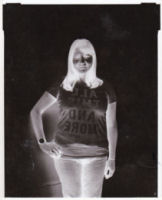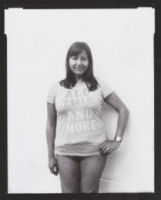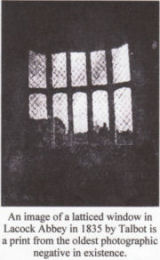The Calotype is a process of the early days of photography. It is the first negative-positive process. The negative is in fact a photografic paper and not based on film or glass plate. This photografic paper is exposed in the camera and by that it works like a negative. The expression is very different compared to normal Negatives for the quality and structure of the paper is influencing the print. For instance, what may be recognized as a cloudy sky might be fibre-structure of the paper.
 |
 |
| Negative (photografic paper) |
Positive |
In this website photos are presented which follow the process of 1839 but produced with modern material. The photos show high quality with the aura of times wich passed some 150 years ago. This has a special effect on the contemplator.
Along with the Daguerrotype the Calotype is the oldest useful photographic process. In the early 19th century intensive research had been carried out to convert the Camera Obscura into an instrument to receive long lasting pictures of the reality.
The french Niépce discovered the chemical fundaments for a photografic process in the 1820th years. But it was not before his cooperation with Daguerre that his research lead to useful process. In 1839 Daguerre published his photografic process at the Académie Française. The scotch William Henry Fox Talbot had developed his own process without having any idea of the work of his competitor.
Talbot named his process Calotype for "Kalos" means in ancient Greek beautiful and his results show soft drawn pictures which people in those times related more with painting as with the cristal sharp photos of Daguerre. Later, Talbot presented his process in the same year in front of the Royal Society in London. Therefore, two compatitive photografic processes existed in the midth of the 19th century but Talbot´s negative-positive process survived in the analogue photography.
The pocedure of the Calotype or Talbotype had been enhanced by Thomas Weber to be used with modern material. His photos represent the high quality of present material but show the grace and soul of a time which has passed by since long.







